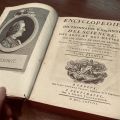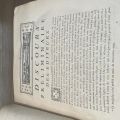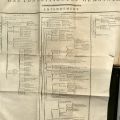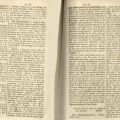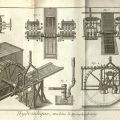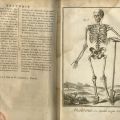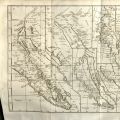The Encyclopédie, ou Dictionnaire raisonné des sciences, des arts et des métiers (translated to Encyclopedia, or a Systematic Dictionary of the Sciences, Arts, and Crafts) is an embodiment of the Enlightenment, the 17th and 18th century European intellectual and philosophical movement. The University Library’s copy of the Encyclopédie is the third edition that was published in Switzerland in 1778 and 1779. It consists of 36 volumes in French that aimed to index all branches of general human knowledge. Three volumes of illustrations from plates accompany the Encyclopédie and are entitled, Recueil de planches, pour la nouvelle édition du Dictionnaire raisonné des sciences, des arts et des métiers : avec leur explication.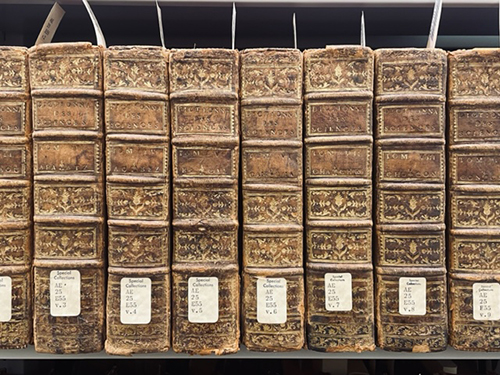
The first edition was published in France in 1751 and was authored by several international contributors who were experts in their fields, which signaled a break in tradition from previous dictionaries. The main editor, Denis Diderot, is the most recognized name attached to the Encyclopédie and he penned thousands of articles (or entries) to complete the volumes. Jean le Rond d'Alembert co-edited the work until 1759.
Diderot and the Encyclopedists strived to transform how people think in the democratization and secularization of knowledge, and to encourage the people (specifically the bourgeoisie, the middle-upper class) to educate themselves in all fields of knowledge. With its liberal content and intellectual ambitions, the Encyclopédie made the conservative French government feel threatened as the work increased in popularity and they eventually suspended its publication in Paris in 1759. It was also banned by the Catholic Church. Hence, Diderot published the third edition in Geneva and Neufchâtel, Switzerland. The Encyclopédie played an influential role in the growing dissent of the bourgeoisie that culminated in the 1789 French Revolution.
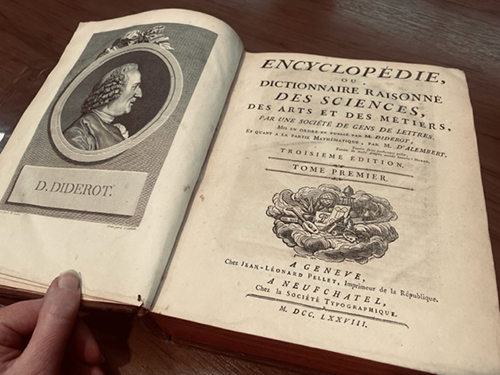 Renouncing traditional categories of knowledge shown in previous dictionaries, Diderot and d’Alembert put forth a new mind-based organization of knowledge, rooted in the philosophy of Francis Bacon and John Locke. They associate three parts of human cognition to three branches of knowledge - memory matched to history, reason to philosophy, and imagination to poetry – and then all knowledge branches off from these three categories, as shown in the “System Figure” folded table.
Renouncing traditional categories of knowledge shown in previous dictionaries, Diderot and d’Alembert put forth a new mind-based organization of knowledge, rooted in the philosophy of Francis Bacon and John Locke. They associate three parts of human cognition to three branches of knowledge - memory matched to history, reason to philosophy, and imagination to poetry – and then all knowledge branches off from these three categories, as shown in the “System Figure” folded table.
Thousands of articles on myriad topics are arranged alphabetically versus thematically. This was a point of tension since the work’s religious articles could be printed side-by-side to secular topics. It represented the Encyclopedists’ desire to combine all fields of knowledge and present them on an equal basis. Examples of the Encyclopédie’s topics include the sciences, math, military studies, marine studies, the mechanical arts, architecture, religion, geography, and astronomy. Detailed plates on specified categories act as visual guides for complex designs, such as the human body, the architectural plans of the Louvre, and a map of 18th century California.
Other related materials to the Encyclopédie also available to view include a 1978 reprint of the Encyclopédie’s illustrations, The new royal encyclopaedia by William Henry Hall printed in 1788, and The Penny Cyclopaedia of the Society for the Diffusion of Useful Knowledge printed in 1833.




